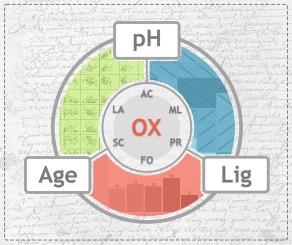有机酸积累对历史纸中纤维素降解的影响。
IF 12.5
1区 化学
Q1 CHEMISTRY, APPLIED
引用次数: 0
摘要
历史纸张的酸度被认为主要取决于施胶的类型,而酸度是其保存的关键属性。然而,本研究表明,在其降解过程中,纸张酸度的增加主要是由于不挥发的羧酸的形成,加速了酸催化水解。这种积累是否以及如何依赖于纸张成分至今还没有系统的研究。研究人员分析了1844年至1990年间89份欧洲纸张样本的有机酸含量和其他与环保有关的特性。草酸是测定浓度最高、对纸张ph影响最大的酸。多变量数据分析显示木质素含量与草酸和甲酸含量之间存在相关性,突出了木质素对酸产量的主导影响。结果还表明,纸张中草酸的含量每年增加约0.01 mmol/g,导致pH以每年0.008的速度下降(假设其他变量不变)。为了帮助纸张保护,开发了一种便携式,非侵入性的拉曼光谱方法,使用偏最小二乘回归来测定历史纸张的木质素含量。研究结果表明,草酸对酸性纸张保护的主导作用具有重要意义。本文章由计算机程序翻译,如有差异,请以英文原文为准。

Impact of accumulation of organic acids on the degradation of cellulose in historic paper
The acidity of historic paper, a property crucial for its preservation, is thought to mainly depend on the type of sizing. However, this research shows that during its degradation, paper acidity increases mainly due to the formation of non-volatile carboxylic acids, which accelerate acid-catalysed hydrolysis. Whether and how this accumulation depends on paper composition has not been studied systematically so far. A collection of 89 European paper samples, dated between 1844 and 1990 was analysed for organic acids content and other conservation-relevant properties. Oxalic acid was the acid determined in the highest concentrations and with the strongest influence on paper pH. Multivariate data analysis revealed correlations between lignin content and oxalic and formic acid contents, highlighting the dominant influence of lignin on acid production. The results also indicate that the content of oxalic acid in paper increases by approximately 0.01 mmol/g per year, resulting in a decrease of pH at 0.008 per year (assuming other variables remain constant). To assist in paper conservation, a portable, non-invasive Raman spectroscopic method was developed to determine the lignin content of historic paper, using partial least squares regression. The research results are significant as they demonstrate the dominant impact of oxalic acid on acidic paper conservation.
求助全文
通过发布文献求助,成功后即可免费获取论文全文。
去求助
来源期刊

Carbohydrate Polymers
化学-高分子科学
CiteScore
22.40
自引率
8.00%
发文量
1286
审稿时长
47 days
期刊介绍:
Carbohydrate Polymers stands as a prominent journal in the glycoscience field, dedicated to exploring and harnessing the potential of polysaccharides with applications spanning bioenergy, bioplastics, biomaterials, biorefining, chemistry, drug delivery, food, health, nanotechnology, packaging, paper, pharmaceuticals, medicine, oil recovery, textiles, tissue engineering, wood, and various aspects of glycoscience.
The journal emphasizes the central role of well-characterized carbohydrate polymers, highlighting their significance as the primary focus rather than a peripheral topic. Each paper must prominently feature at least one named carbohydrate polymer, evident in both citation and title, with a commitment to innovative research that advances scientific knowledge.
 求助内容:
求助内容: 应助结果提醒方式:
应助结果提醒方式:


